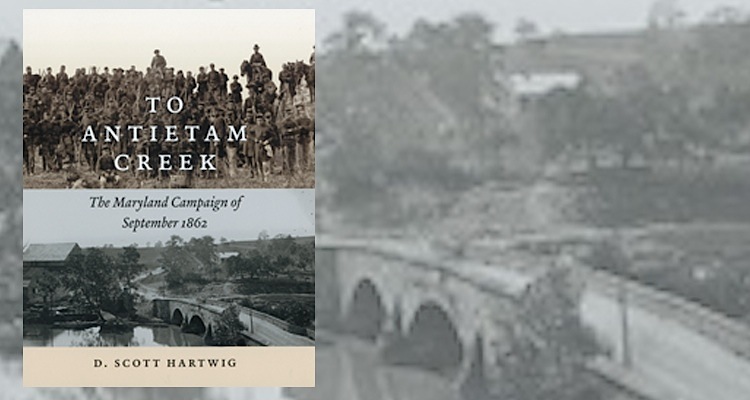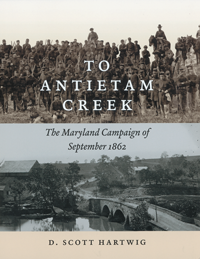 To Antietam Creek: The Maryland Campaign of September 1862 D. Scott Hartwig Johns Hopkins University Press 2012, $49.95
To Antietam Creek: The Maryland Campaign of September 1862 D. Scott Hartwig Johns Hopkins University Press 2012, $49.95
For nearly three decades, Stephen W. Sears’ Landscape Turned Red has been the gold standard among books about the September 1862 Maryland Campaign. Scott Hartwig’s big new book now can lay claim to pre-eminence on this topic—but only for events through September 16, where this first volume of his projected two-volume work concludes.
Hartwig, a long-tenured historian at Gettysburg National Military Park who has been working diligently on his Antietam study for many years, defines the endeavor as “in part a study of command in war,” together with a description of the “collective experience of the men who made up the two armies.” Thus far he is achieving both goals quite admirably.
Colonel Ezra A. Carman, longtime battlefield historian (and a veteran of the 1862 action), accumulated a mammoth array of priceless primary sources that serves as a basis for all research on Antietam. Hartwig used Carman’s
manuscripts exhaustively, also going far afield for additional evidence, and then weaving that rich lode into a smart and smooth narrative.
Hartwig launches no startling revisionist theorems about the Maryland Campaign. His take on George McClellan’s mind-set and behavior, for instance, falls within the traditional latitudes. Instead his book steadily paints events through September 16 in detail, with color and the obvious product of methodical research. It becomes at once the ultimate authority on its subject, with every likelihood that it will remain the classic account for a long while.
A work of this scope and quality absolutely must unveil its origins and pedigree via thorough notes, and To Antietam Creek meets that criterion. Unfortunately, the book includes no bibliography, only a very brief “Essay on Sources” that mentions a website on which the bibliography is posted.
The book includes only eight illustrations, but offers 17 maps, plenty to depict troop movements in gratifying detail—though the maps are a bit muddy, appearing less crisp than most readers will like. But Hartwig provides a wonderfully comprehensive index.
To Antietam Creek’s concluding chapter, “Eve of Battle,” quotes McClellan’s apt forecast on the night of September 16: “We might reasonably expect a violent collision at the earliest dawn.” With that in mind, anyone interested in Antietam should put a carpenter on retainer to add a sturdy bookshelf to his library; Hartwig’s pending second volume—“an in-depth study of the Battle of Antietam”—will doubtless be as good, and as thick, as his inaugural treatise.
—Robert K. Krick
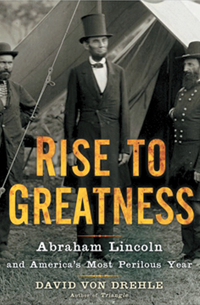 Rise to Greatness: Abraham Lincoln and America’s Most Perilous Year David Von Drehle Henry Holt, 2012, $30
Rise to Greatness: Abraham Lincoln and America’s Most Perilous Year David Von Drehle Henry Holt, 2012, $30
As David Von Drehle describes it, 1862 was arguably the most perilous year in our nation’s history and the year of Abraham Lincoln’s “rise to greatness.” The author focuses exclusively on that year, when the president lost his 11-year-old son Willie to typhoid, took command of the Union Army and turned the tide of the war.
As 1862 began, the federal government seemed overwhelmed, the U.S. Treasury was broke and the Union’s leading general, George B. McClellan, was gravely ill. As a frustrated Lincoln described the situation to Quartermaster General Montgomery Meigs: “The people are impatient; [Secretary of the Treasury Salmon P.] Chase has no money and tells me he can raise no more; the general of the army has typhoid fever. The bottom is out of the tub. What shall I do?” In contrast, the Confederacy—with expert military leadership and an economy that appeared to be booming—seemed inexorably on the road to victory.
Von Drehle shows how the survival of the American republic depended on the judgment, cunning and resilience of a frontier lawyer, with little administrative experience, who had been in the White House for less than a year. By Decem-ber the cataclysm had been averted; Union generals who showed they could fight had emerged, while the Confed-erate Army was suffering major losses that hinted at its demise. The blueprint of modern America as an expanding industrial and financial colossus was being created. And Lincoln, who carried the nation through its darkest hour, had evolved into an unexpected force.
While Von Drehle’s book contains nothing new, it is an excellent and gripping synthesis, sure to inspire additional interest in Lincoln’s leadership style and its relevance to the contemporary world.
—Frank J. Williams
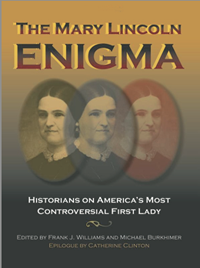 The Mary Lincoln Enigma: Historians on America’s Most Controversial First Lady Edited by Frank J. Williams and Michael Burkhimer Southern Illinois Press 2012, $32.95
The Mary Lincoln Enigma: Historians on America’s Most Controversial First Lady Edited by Frank J. Williams and Michael Burkhimer Southern Illinois Press 2012, $32.95
A reality show featuring Mary Todd Lincoln would surely have garnered mega ratings. Abraham Lincoln’s high-energy wife relished the drama of controversy. She was extravagant and often combative—even while being kind and compassionate—and also usually bull-headed. In short, a true diva.
Mary has certainly not been overlooked by historians, though she is understandably overshadowed by her legendary husband. Books and movies have often depicted the first lady as a nasty, unstable narcissist who created misery for her husband and for untold numbers of people she encountered. The Mary Lincoln Enigma: Historians on America’s Most Controversial First Lady gives us a multifaceted look into the life of this presidential spouse through the eyes of historians and experts. This book presents readers with essays interpreting Mary Lincoln’s eventful life. Included are chapters about Mary’s views on race and slavery, her political “partnership” with her husband, a psychiatrist’s evaluation of her mental state, her childhood, and even an in-depth study into her extravagant tastes in fashion.
Mary Lincoln scholars won’t see much here that hasn’t been documented many times before. But casual students of the war era will get a fairly well-rounded look at her life, one that is difficult to obtain when reading just one book about her.
Many readers will likely be fascinated by psychiatrist/historian James S. Brust’s compelling evaluation of Mary Lincoln’s chronic mental illness and the profound effect he thinks it had on her behavior. Brust believes she was suffering from bipolar disorder, a condition that can lead to periods of psychosis. Brust also strives to put the impact of her condition into modern perspective, given the stigmas about mental illness that persist even today. (It’s also worth noting that Catherine Clinton, who wrote the volume’s epilogue, seemingly takes Brust to task for his clinical evaluation of Mrs. Lincoln’s problems.)
All told, The Mary Lincoln Enigma offers readers the opportunity to see America’s most famous first lady through a wide variety of lenses.
—James R. Hall
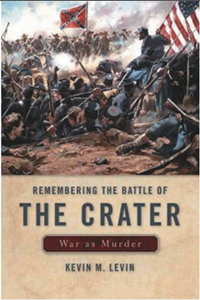 Remembering the Battle of the Crater: War as Murder Kevin M. Levin University Press of Kentucky, 2012, $35
Remembering the Battle of the Crater: War as Murder Kevin M. Levin University Press of Kentucky, 2012, $35
The campaign for Richmond and Petersburg that began in June 1864 was the war’s longest, not ending until April 1865 when the Army of Northern Virginia had just a week to live. Yet the length and complexity of the campaign is undoubtedly a major reason why, save for important studies by Noah Andre Trudeau and Richard Sommers, it hasn’t re-ceived similar attention from historians as other major campaigns. There is now a notable uptick in interest in this arena, however, particularly the July 1864 Battle of the Crater.
Kevin Levin’s new book follows in the footsteps of recent contributions by Richard Slotkin, Alan Axelrod and Earl Hess, but differs in that he focuses not on the battle itself (despite providing a pretty good overview) but on the forces that shaped how the struggle and the men who fought there have been remembered. Levin does this in a remarkably efficient 140 pages of text. He devotes particular attention to how postwar Virginia’s political dynamics fueled disputes over Confederate Maj. Gen. William Mahone’s role in the battle, as well as the ways racism and the fight for civil rights have affected the memory of African-Americans’ role.
While the book’s brevity has its benefits, readers may finish it wanting more. It would have helped if Levin had discussed how the Crater is remembered compared to other engagements in which African Americans played a conspicuous role, such as the Battle of New Market Heights.
On the whole, readers will find this an interesting and enjoyable treatment. The work offers compelling evidence supporting the findings of previous studies of how racial attitudes and postwar concerns continue to shape our views on the nation’s bloodiest war.
—Ethan S. Rafuse
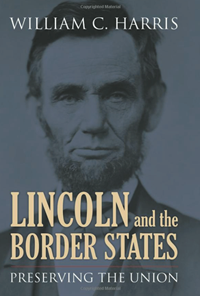 Lincoln and the Border States: Preserving the Union William C. Harris University Press of Kansas 2012, $34.95
Lincoln and the Border States: Preserving the Union William C. Harris University Press of Kansas 2012, $34.95
No problem was more vexing for Abraham Lincoln during the war than managing military and civil affairs in the four border states while keeping them in the Union. In his comprehensive study of administration policies in Missouri, Kentucky, Maryland and Delaware, renowned Lincoln scholar William C. Harris opines that antislavery policies and the enlistment of blacks in the Army were his greatest challenges.
Harris maintains that from the beginning Lincoln firmly believed the border states must be kept in the Union in order for the North to successfully prosecute the war. His determination, and personal involvement in many routine decisions, generated conflicting opinions in his own party as well as among his political opponents.
Lincoln made a series of astute, if controversial, decisions early on, including suspending habeus corpus and rescinding the emancipation orders of Generals John C. Frémont and David Hunter, which Harris concludes were within his purview as commander in chief. But Harris is no Lincoln apologist; he analyzes what he considers missteps as well. President-elect Lincoln chose not to comment on political issues during the Secessionist Winter of 1860-61. But Harris maintains, “Lincoln’s failure to issue a soothing public statement to southerners…made the political situation more difficult in the border states.” Lincoln could have “reassured the border states of his good intentions,” Harris believes, without “repudiating the Republican platform against slavery.”
The evolution of Lincoln’s thinking about emancipation—brilliantly analyzed in Eric Foner’s recent book The Fiery Trial: Abraham Lincoln and American Slavery—and the reaction of each border state to the Second Confiscation Act and the Emanci-pation Proclamation are explored here in clear, concise prose. By 1863 most border state representatives could see the handwriting on the wall concerning slavery, but Harris understands that “border state whites of all classes insisted that the states, not the federal government, should determine the status of blacks in freedom.” After Lincoln’s death, that is precisely what came to pass.
—Gordon Berg
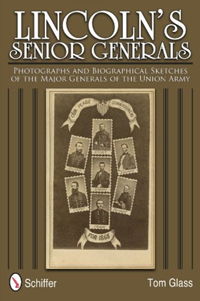 Lincoln’s Senior Generals: Photographs and Biographical Sketches of the Major Generals of the Union Army Thomas Glass Schiffer Publishing 2012, $59.99
Lincoln’s Senior Generals: Photographs and Biographical Sketches of the Major Generals of the Union Army Thomas Glass Schiffer Publishing 2012, $59.99
Rank (and its stepsister “seniority”) in the Union Army during the Civil War is a typically misunderstood concept. Consider the commonly held misconception that James B. McPherson was the most senior Federal officer killed in action during the war; that “honor” of course goes to John Sedgwick. Further adding to the confusion is the meaning of brevet ranks and the difference in rcognition between the U.S. Regular Army and the Union Volunteer Army. But confusion does not change the fact that rank was important. As career officer John Tidball wrote, “promotion is the lifeblood of the soldier, and anyone who disregards it is not worthy of the name.”
Thomas Glass has compiled in this new book an intriguing look at 133 officers who attained the rank of major general in both the Regular and Volunteer armies during the war, from Christopher Augur to Horatio Wright. Although the biographical sketches for each general are fairly standard and follow already familiar story lines, what sets Lincoln’s Senior Generals apart from earlier works by Ezra Warner (Generals in Blue) and John and David Eicher (Civil War High Commands) are its reproductions of wonderful cartes-de-visite, many with signatures. This adds a different dimension to Glass’ work. While reading the capsules, one can also look each general in the eye and develop a better feeling for him. We can realize that most were much more than mere icons.
The 400-page book is printed on heavy, glossy paper. There is also plenty of useful information concerning the Army’s nomination and confirmation process and an explanation of brevet ranks.
—Harry Smeltzer

